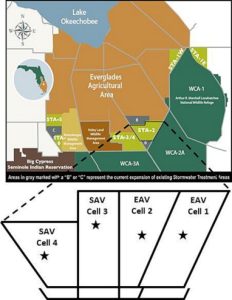Previous studies have investigated the role of litter type on soil organic nitrogen (SON) mineralization and the resulting chemical composition in aerobic soils. However, there are limited studies on the role of anaerobic conditions. Researchers in the UF/IFAS department of soil, water, and ecosystem sciences (SWES) determined the SON chemical composition and N mineralization rate with depth of two different vegetation types. Those are emergent aquatic vegetation (EAV) and submerged aquatic vegetation (SAV). Prevailing flooded soil conditions in a subtropical treatment wetland are included in the research. The study used several sampling sites in the Everglades Agricultural Area’s Stormwater Treatment Area-2. Their research appears in the journal Ecological Engineering.

Findings
They found the treatment wetland provided similar water quality and climate conditions across the vegetation types. Researchers sampled three soil depths, the surficial floc, recently accreted soil, and soil present before constructing the treatment wetland. The surficial floc material created from emergent plants exhibited a mean total carbon (TC) and total N (TN) of 364 g C kg−1 and 27 g N kg−1. For submerged plants, TC was 185 g C kg−1 and TN was 12 g N kg−1. Despite these differences, there were no significant differences in the proportion of N that was soil organic nitrogen (SON). Mean extractable ammonium was lower in SAV systems and may be due to increased pH (~9) during the day compared to EAV systems.
For the chemical composition, the N-associated aromatics comprised 4.8% of the SON in SAV areas compared with just 1.6% for EAV. This suggests an increased SON recalcitrance in SAV-created floc. The difference in EAV and SAV chemical composition may be important for the long-term storage of SON. Future studies should focus on additional environmental factors that favor the formation of stable recalcitrant SON.
Highlights
-
Litter source does not influence resulting soil organic nitrogen (SON) pools under anaerobic conditions
-
Litter molecular composition may be important for the long-term stability of SON
-
Organic N mineralization influenced by nitrogen to phosphorus ratio of litter and soil organic matter
 1
1
